Corrosion of Silver-Plated Copper Conductors - NEPP
Corrosion of Silver-Plated Copper Conductors - NEPP
Corrosion of Silver-Plated Copper Conductors - NEPP
You also want an ePaper? Increase the reach of your titles
YUMPU automatically turns print PDFs into web optimized ePapers that Google loves.
Figure 13. Influence <strong>of</strong> insulation material<br />
on corrosion rating <strong>of</strong> silver-plated strands<br />
Figure 14. Strand manufacturer and<br />
corrosion rating for silver-plated strands<br />
Figure 15. Wire and cable processor and<br />
corrosion rating for silver-plated strands<br />
Figure 16. Positions <strong>of</strong> strand in cable and<br />
corrosion rating (for silver-plated strands).<br />
'Insulated wire' includes inner conductor <strong>of</strong><br />
cables and hook-up wires<br />
324<br />
A possible explanation is thought to be that chlorine and fluorine have different<br />
influences on the metals present.<br />
The influence <strong>of</strong> the various types <strong>of</strong> insulation on the corrosion rating <strong>of</strong> wires and<br />
cables is illustrated in Figure 13. It appears that the high corrosion ratings (at least<br />
rating 4) are achievable in the test irrespective <strong>of</strong> the types <strong>of</strong> insulation used on the<br />
strands. FEP was mainly used as the loose-fitting outer jacket material on RF cables,<br />
and PTFE was mainly used as insulation material on inner conductors. PTFE had<br />
been sintered onto the strands and trapped only a minimal amount <strong>of</strong> air.<br />
The influence <strong>of</strong> the strand manufacturer on corrosion rating is illustrated in<br />
Figure 14. These results show no marked difference (average <strong>of</strong> A = 2.1, <strong>of</strong> B = 1.3).<br />
The influence <strong>of</strong> the wire and cable manufacturer on the corrosion ratings are<br />
illustrated in Figure 15. These results show that the accelerated test will produce<br />
corrosion on wires and cables from all manufacturers.<br />
The influence <strong>of</strong> strand position - whether braid or stranded wire - is illustrated in<br />
Figure 16. It seems that the accelerated test is likely to produce slightly more<br />
corrosion on the braided strands than on the inner conductor. The amount <strong>of</strong> air<br />
trapped within the insulations depends on both the construction <strong>of</strong> the cable and the<br />
method by which the insulation is applied. The braids are surrounded by a far greater<br />
volume <strong>of</strong> air than the inner conductors, thus permitting the ingress <strong>of</strong> greater<br />
quantities <strong>of</strong> oxygen and moisture during the test exposure.<br />
ESA Journal 1984, Vol. 8


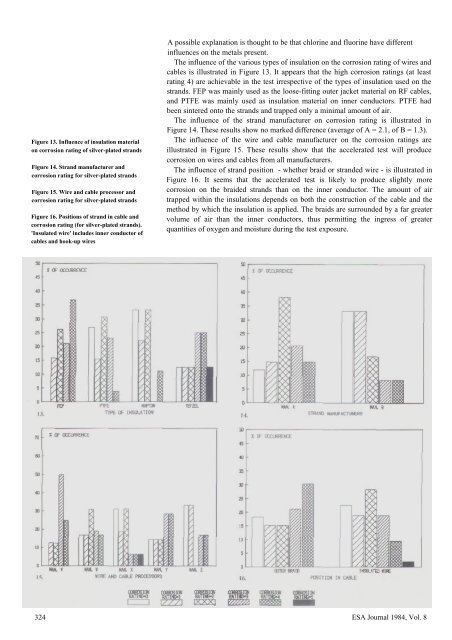
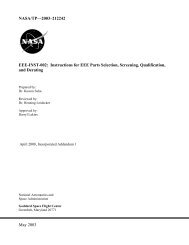

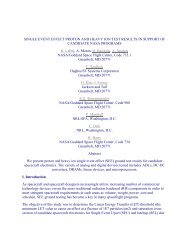
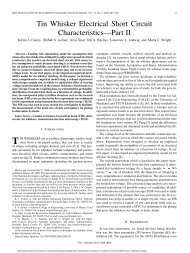
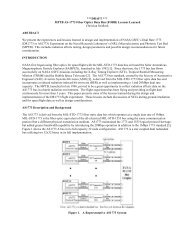

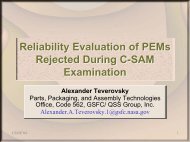
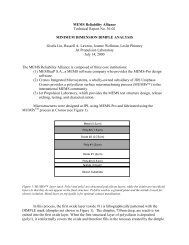
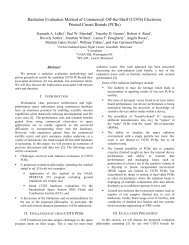
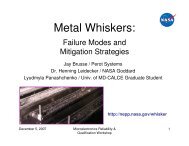

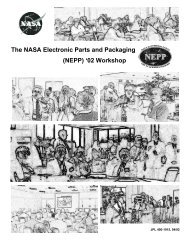

![mil-std-2223 [test methods for insulated electric wire] - NEPP](https://img.yumpu.com/4036001/1/190x249/mil-std-2223-test-methods-for-insulated-electric-wire-nepp.jpg?quality=85)